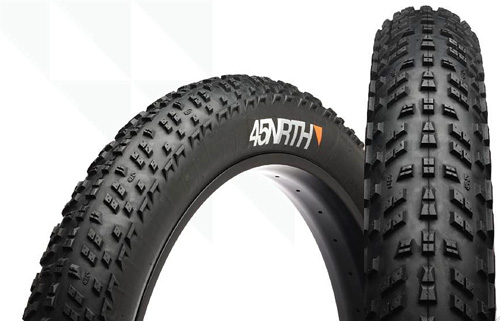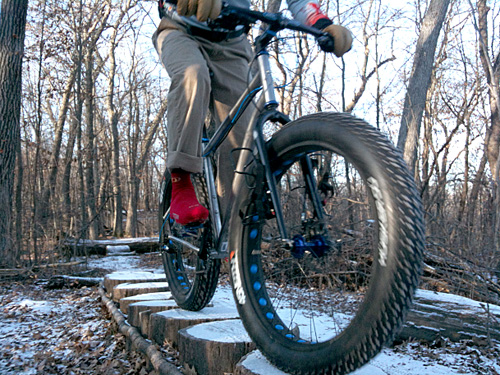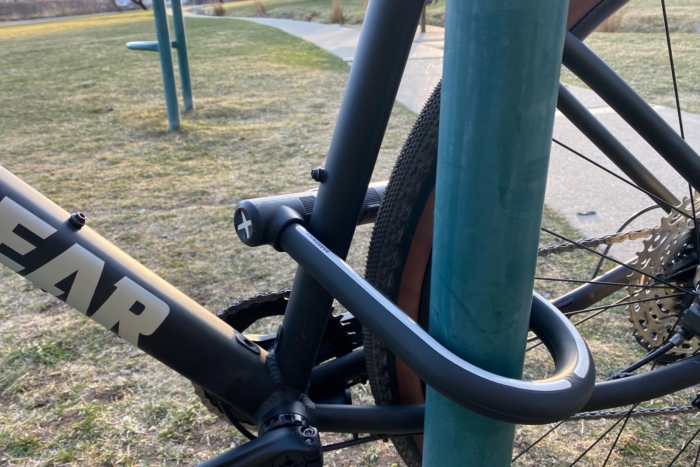By T.C. WORLEY
Log piles, “extreme difficulty”-rated rock gardens, flights of stairs, and tacky mud holes have all taken a heavy mocking from my new bike. Equipped with obese, 26 × 4-inch tires rigged on Salsa’s Ti Mukluk frameset, this beast of a bike was dreamt up for riding through snow and over terrain that would normally stop a mountain bike in its tracks. The tires come from 45Nrth, a new brand under QBP, and the model is the Husker DÜ, which roll, grip, and crush almost anything in their way. For the white stuff, the 4-inch-wide rubber is to bikes what snowshoes are for human feet.
For the last few weeks, I’ve been riding this “snow-bike” on trails and pavement in my oddly snow-less home city of Minneapolis. We had no white Christmas this year, and January is mild and slushy still. But even on dry land and mud, the chubby-tire’d Mukluk can be a fun and performance-enhancing ride.
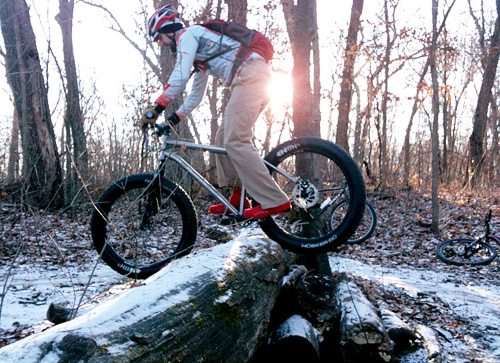
Many riders I talk to assume this genre of extra-fat-tire “niche” bike is too costly to justify or own. For sure the titanium version of the Mukluk, which I tested, is costly at $2,100 as a bare frameset. But the Mukluk 3, a full build, can be had for around $1,600, making a snow-bike an easier sell for riders wanting something in this area to add to their “quiver.”
To be sure, there are some big limitations with the Mukluk. It is a heavy beast. My titanium test bike, the very lightest in the line, still weighed in at 31 pounds. On pavement, you feel the sluggishness. On a recent ride in the city, I literally trudged the bike uphill into a stiff headwind. Compared to my speedy town commuter, the rolling resistance was very substantial and the steering slow and dull; it felt frustratingly slow.
But on the city ride the fat tires were also smoothing out every bump I’d normally have to steer around. On the way home that day, with that same big wind then at my back, I longed for more gears as I coaxed the pig into a 17-mph trot, smiling the entire ride back.
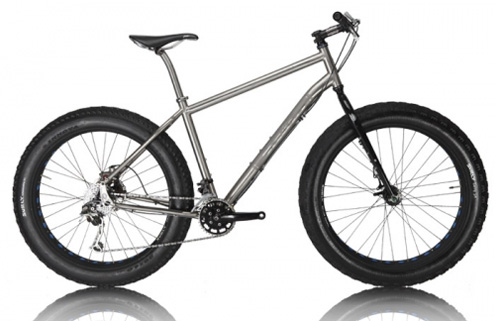
Compared to a normal mountain bike, the Mukluk rolls slower for sure. But it begs to be ridden off of curbs and through the nastiest potholes in town, a tank of a commuter that slows for little at all.
Off the road and onto trails, the sluggish and oafish behavior dissipates as the Mukluk barrels down the dirt with purpose and force. Logs, roots, and big ruts are no match for the inertia and mass of this bike. Its overall weight is great for momentum, but it is still there and very noticeable on the hills. Pedal-powered monster truck? Yep, that’s the analogy here no doubt.
